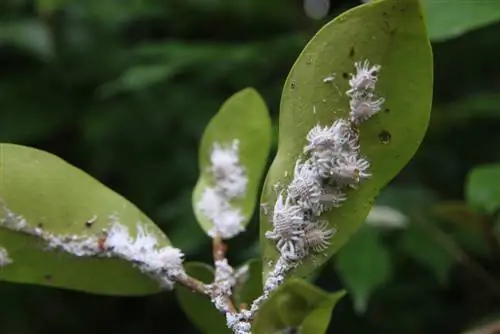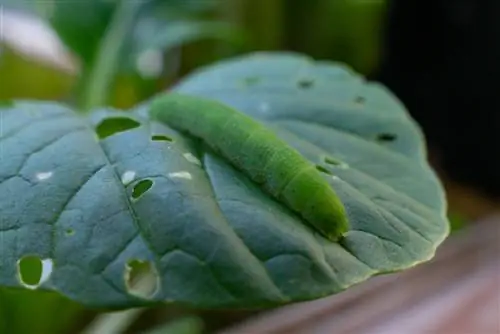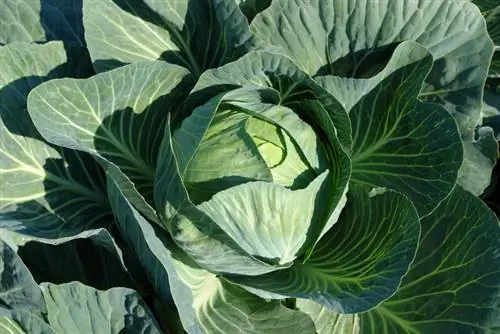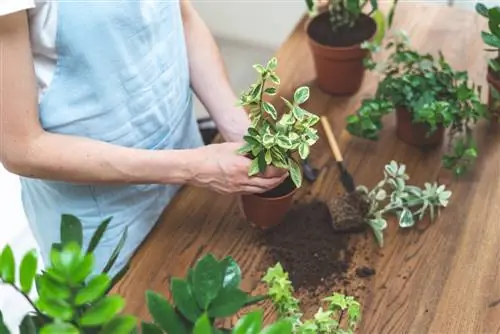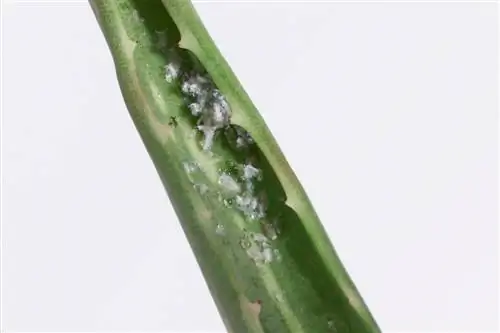- Author admin [email protected].
- Public 2023-12-16 16:46.
- Last modified 2025-01-23 11:21.
The boxwood, which is still popular in the garden as a border, hedge or topiary, is unfortunately very susceptible to infestation by fungi or animal pests. White flakes on the leaves and shoots are often an indication of sucking insect pests such as boxwood leaf suckers or mealybugs.

What are white flakes on boxwood and how do you fight them?
White flakes on boxwood leaves and shoots can indicate harmful insects such as boxwood leaf suckers or mealybugs. Combat the infestation with neem or rapeseed oil preparations and remove heavily infected shoot tips in summer.
Boxwood leaf sucker
The boxwood leaf sucker, also known as the boxwood psyllid, prefers to suck on young leaves, but also on fresh shoots, which causes various deformations. Similar to mealybugs and mealybugs, which also suck leaf juice, the pests secrete protective wax threads. In the case of a severe infestation, leaves and shoots are also covered by a sticky layer of honeydew, which in turn can be covered with the blackish sooty mold fungus. The adult psyllids lay their eggs on the boxwood in summer, from which the larvae then hatch. These ultimately overwinter in the larval stage directly on the plant.
malicious image
The leaves on the young shoots are spoon-like or blistered. If you take a closer look at the affected shoots, you can see white flakes of wax wool. These contain the yellow-brown leaf suckers that are not unlike aphids. If the infestation is severe, the leaves are also covered in sticky-sweet honeydew.
Combat
If there is a severe infestation, cut back the shoot tips of the boxwood in summer. Preparations based on neem or rapeseed oil, which you can use to spray the infected plants while they are dripping wet, are also well suited for hobby and home gardens.
mealybugs and mealybugs
White, cotton-like webs on leaves and shoots and sometimes also on the roots can also result from an infestation by mealybugs and mealybugs. The animals, which are around three to seven millimeters long, also feast on the nutrient-rich leaf juice and can cause serious damage.
malicious image
The cotton-like structures are cocoons that pests use to protect themselves from predators. An infestation is initially indicated by yellowing and drying leaves, which are often dropped after a while. Shoots and leaves wither and the plant's growth is inhibited due to the lack of nutrients. The white bumps with the animals are located mainly on the undersides of the leaves as well as in the branches of the shoots and the leaf axils.
Combat
A vigorous spraying with neem or rapeseed oil preparations also helps with these plant lice, and you should shade boxwoods treated in this way. The combination of a sunny location and oil treatment can quickly lead to unsightly leaf burns. However, if the infestation is already advanced, the only thing that can help is secateurs. Cut off affected shoots and leaves generously.
Tip
If, on the other hand, the white flakes can be seen during the spring shoots and no further damage to the boxwood is visible, this is by no means a pest infestation. Instead, the light, protective wax layer is now peeling off the new shoots and leaf buds.

